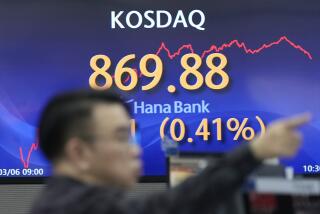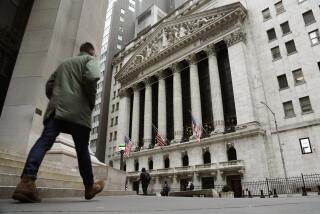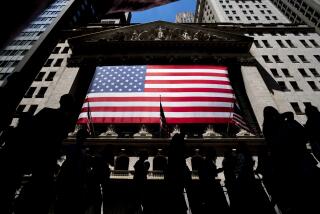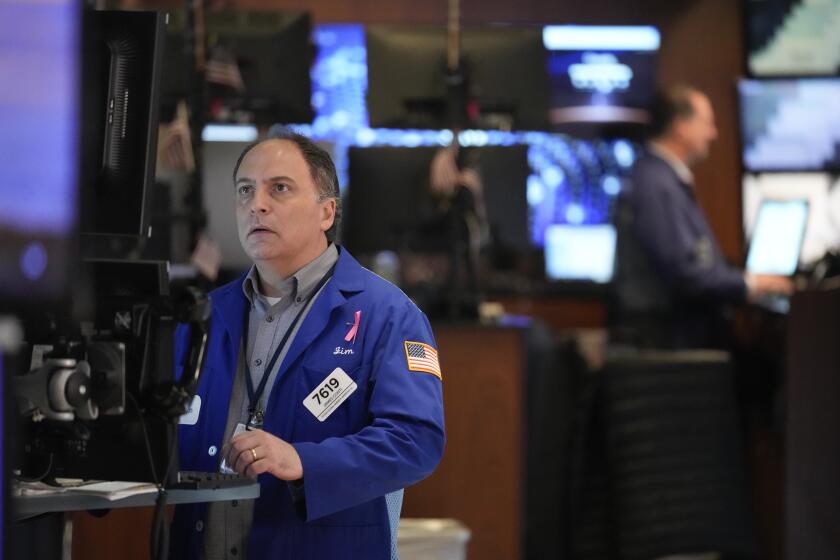Investing: Few places to hide as bear growls
The best that can be said about third-quarter stock mutual fund performance is that it followed the rules: Amid rising investor gloom, the market sectors typically viewed as the riskiest suffered the steepest declines, while the less-risky sectors mostly held up better.
But that may not be much consolation to investors who weren’t prepared to see so many categories of equities slide into new bear markets, at least by the classic yardstick of a 20% drop from recent highs.
Small- and mid-size U.S. stocks, European shares and emerging-market stocks all fell into the bear’s clutches in the third quarter, less than three years after the last major downturn ended.
The struggling U.S. economy, a downgrade of America’s credit rating, Europe’s unending debt crisis and new doubts about growth prospects of emerging markets, particularly China, all weighed heavily on share prices in the quarter.
After falling off a cliff in early August, equities have since been swinging wildly, day to day and week to week, as investors and traders have tried to divine whether the global economy is headed for a replay of the 2008-09 recession, or maybe something worse.
The Russell 2,000 small-stock index has moved more than 5%, up or down, in five of the last 10 weeks. For many Americans, that feels more like a craps game than an investment — which just encourages more selling by people who otherwise might have held on for the long haul.
“People are saying, ‘Why do I need this?’ ” said Jeffrey Yale Rubin, director of research at market data firm Birinyi Associates in Westport, Conn.
Yet in the U.S., the economic reports in recent weeks have largely continued to point to slow growth, but not recession. Last week Wall Street was surprised by September data showing a pickup in manufacturing activity, strong car sales for the month and a larger-than-expected (though still paltry) rise in new jobs.
That helped stocks bounce after hitting new 2011 lows on Monday. The blue-chip Standard & Poor’s 500 index, which fell 13.9% in the third quarter, rose 2.1% in the first week of the fourth quarter. At Monday’s close the S&P had been down 19.4% from its spring high, perilously close to the 20% bear-market threshold.
With most equity markets still near their recent lows, investors who believe the summer slump produced long-term bargains have plenty of beaten-down shares from which to choose:
• China-region stock funds took the biggest dive of any equity sector in the third quarter, losing 25.6% on average, according to fund tracker Lipper Inc. Chinese investors and foreigners alike have soured on the country’s equities as inflation has surged and the government has tightened credit in response.
The fear is that China could be headed for a “hard” economic landing. What’s more, new trade tensions with the U.S. are weighing on investor sentiment. A U.S. Senate bill would make it easier to boost tariffs on Chinese exports unless Beijing allows its currency to rise faster against the dollar.
On Friday, the Shanghai composite stock index hit a new two-year low.
• The average emerging-markets stock fund slid 23% in the quarter, as markets including Brazil, India, Russia and Poland were slammed by worries about the global economy. Even though many investors believe that emerging markets have tremendous long-term growth prospects, the stocks remain vulnerable to sharp swings based on near-term economic expectations.
And because many emerging-market economies’ fortunes are tied to commodity exports, the plunge in raw materials’ prices in the quarter raised more questions about growth prospects in 2012 unless the global economy reaccelerates.
• Funds that own small- and mid-size U.S. stocks mostly fell between 20% and 23% in the quarter, their worst drop since the financial-system meltdown of late-2008.
When investors turn risk-averse, smaller stocks usually get clobbered. In part, it’s a simple liquidity issue: Many smaller issues are thinly traded, which means their price moves, up or down, can be dramatic.
And if investors fear that another recession and/or financial crisis is imminent, they know that smaller firms can lack the resources that bigger companies have to tough it out.
But the slump in smaller stocks in the quarter also reflected profit-taking by investors who had scored hefty gains in the shares over the previous two years. From the stock market’s bottom in March 2009 to its high in April of this year, the Russell 2,000 soared 152%, far exceeding the 96% rise in the Dow Jones industrials.
On Wall Street, many analysts have been advising clients for the last year to shift more money into bigger U.S. stocks and away from smaller issues. That finally paid off in the third quarter.
For example, the average fund that owns large-capitalization “growth” stocks lost 14.9% in the quarter, compared with a 21.3% decline for small-cap growth funds and 20.1% for mid-cap growth funds.
Big-stock proponents say the sector has one key advantage likely to continue drawing nervous investors: Many of the stocks pay decent dividends, which look more attractive now compared with low yields on high-quality bonds.
For investors looking to put money to work, “I still would favor the dividend-paying stocks,” said Larry Adam, chief investment strategist at brokerage Deutsche Bank Alex Brown in Baltimore.






